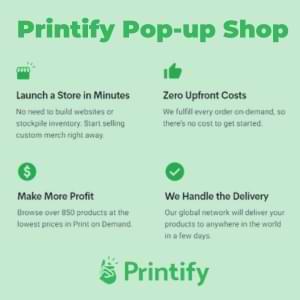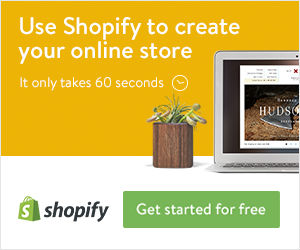Guerrilla marketing is all about promoting your business in creative, unconventional, and cost-effective ways. If you’re a startup or small business owner with a limited marketing budget, guerrilla marketing tactics can help increase brand awareness and engage potential customers without breaking the bank.
Unlike traditional marketing, guerrilla marketing relies on imagination, energy, and surprise instead of big budgets. The goal is to create unique, buzzworthy experiences that spread organically rather than dedicate funds to paid advertising.
In this post, we’ll dive into some of the most effective guerrilla marketing ideas including:
- Ambient advertising
- Experiential marketing
- Wild postings
- Astroturfing
- Content marketing
- Social media buzz
Implementing these clever guerrilla tactics can help you:
- Increase brand awareness – Get your business noticed in crowded markets.
- Engage customers – Create memorable, interactive experiences.
- Gain word-of-mouth – Inspire people to talk about and share your campaign.
- Go viral – Achieve rapid growth by creating buzz online.
Ambient Advertising
One popular guerrilla marketing tactic is ambient advertising, which involves placing ads and brand messaging in unusual and unexpected public places. The goal is to surprise people and make your brand stand out from the background clutter.
Some examples of effective ambient advertising include:
- Chalk logos and messages on sidewalks near events or relevant locations. This catches attention as people look down.
- Branding vehicles like cars, trucks or buses. Wrap vehicles with a branded message to turn them into moving billboards.
- Coffee sleeve branding by placing logos and promotions on disposable coffee cups.
- Branded shopping trolleys and shopping baskets to build awareness in grocery stores.
- Bathroom ads – brand mirrors, faucets, toilet paper etc. when people are idle.
- Vehicle wraps – cover a bus, cab or bicycle with your branding.
To execute ambient advertising effectively:
- Be relevant to the location – customize messages. Don’t just randomly place ads.
- Obtain permission if needed to avoid backlash.
- Consider legalities for branding public transport and common spaces.
- Focus on quality – people see lots of bad ambient ads so make yours stand out.
- Add humor and wit – this helps ambient ads get noticed and remembered.
Get creative with ambient advertising placements and transform traditional billboards into unique branding opportunities in surprising spaces your audience frequents. This guerrilla tactic can massively boost brand visibility!
Experiential Marketing Experiential marketing is another guerrilla tactic that involves creating unique, branded events and interactions that get people engaged with your product or service.
The goal is to make connections by allowing the audience to experience the brand first-hand, rather than just view passive advertising.
Experiential Marketing
Experiential marketing is another guerrilla tactic that involves creating unique, branded events and interactions that get people engaged with your product or service.
The goal is to make connections by allowing the audience to experience the brand first-hand, rather than just view passive advertising.
Some examples of experiential guerrilla marketing include:
- Popup shops – set up temporary branded stores or exhibits in busy areas.
- Street teams – have branded representatives interact with people in public like giving product samples.
- Flash mobs – hire performers to suddenly do choreographed dances or stunts with your branding.
- Brand ambassadors – have models wear branded clothing or gear in relevant settings.
- Interactive kiosks – set up booths for games, activities, or free trials involving your product.
- Scavenger hunts – create branded challenges sending people across key city spots.
To maximize the impact of experiential marketing:
- Pick locations with heavy foot traffic to attract attention.
- Offer value – give away samples, coupons, or special offers.
- Create shareable moments – photo ops, contests, etc. that people will post about online.
- Educate – train brand ambassadors to share key messages and product benefits.
- Have a call-to-action – use the experience to drive sales, app downloads, email signups etc.
Get hands-on with guerrilla experiential marketing to engage audiences in memorable ways that traditional advertising can’t match. The brand exposure and buzz will be invaluable!
Wild Postings
Wild posting refers to any type of guerrilla marketing that involves placing advertising posters, stickers, or flyers in outdoor public spaces. This allows you to promote your brand in unconventional places that people frequent.
Some wild posting ideas include:
- Utility box branding – ads wrapped on electrical boxes, telephone booths etc.
- Bathroom ads – posters and flyers posted in stalls.
- Bus shelter ads – exterior or interior displays and branding.
- Street furniture – branding on benches, kiosks, garbage bins.
- Light pole banners – vertical banner signs wrapped on lamp posts.
- Wild billposting – large ad posters strategically glued or taped on walls or structures.
When executing a wild postering campaign:
- Consider legalities – get permits if needed and only post where allowed.
- Make ads impossible to ignore using contrasting colors and bold fonts that stand out.
- Add a call-to-action – include a directional note on where to learn more.
- Use simple messaging that can be understood quickly while walking or driving by.
- Quantify your impressions – track locations and foot traffic to estimate campaign reach.
Wild postings allow you to cut through the visual clutter and gain incredible street-level visibility for your small business’s brand. Just be sure to do it legally and leverage high-impact public areas.
Undercover Marketing
Undercover marketing, also known as stealth marketing, involves promoting your brand secretly through unpaid and unsolicited product mentions. The audience doesn’t realize they are being marketed to.
Some undercover guerrilla tactics include:
- Fake websites that seem like real consumer review sites but subtly tout your product.
- Unofficial spokespeople who are paid to casually mention or be seen using your product publicly.
- Viral videos that seem amateur but are created by your brand to start sharing organically.
- Astroturfing – masking marketing as authentic grassroots buzz through phony blogs, tweets etc.
- Product seeding – giving free samples to influencers and leaders to create word-of-mouth.
The pros of undercover marketing are:
- People believe unofficial opinions over ads.
- You can reach customers actively avoiding marketing.
- Buzz seems authentic and organic rather than promotional.
However, there are risks if discovered:
- Legal issues with failing to disclose paid product promotion.
- Reputation damage from feeling deceived.
- Mistrust that carries over to your real campaigns.
While undercover marketing might work short-term, transparency and authenticity are better long-term strategies for gaining real customers’ trust.
Astroturfing
Astroturfing is a specific type of undercover marketing that aims to create a fake grassroots buzz around your brand. This is done by masking promotional content to make it seem like organic, user-generated endorsement rather than ads.
Some examples of astroturfing include:
- Fake reviews – paying people to leave positive reviews without disclosing their ties.
- Phony blogs – creating pseudo news or fan sites that recommend your product.
- Comments – leaving website comments praising your company under made-up names.
- Social media – using bots or employees to tweet/post as ordinary consumers.
- Viral videos – launching supposedly amateur product videos that spread rapidly.
The potential benefits of astroturfing include:
- Increased web visibility as phony sites, reviews, and posts rise in search results.
- Credibility since recommendations seem unbiased.
- Virality from people sharing “real” content.
However, astroturfing also comes with legal and reputation risks:
- FTC violations for failing to disclose paid content.
- Mistrust if your lack of transparency is exposed.
- Search penalties if caught manipulating results through deception.
While astroturfing might deliver short-term gains, authentic and transparent marketing is better for building real trust and brand growth.
Content Marketing
Content marketing involves creating valuable, relevant online content like blog posts, videos, and social media to attract and engage customers organically. This allows you to build awareness and drive action without traditional ads.
Examples of great content for guerrilla marketing include:
- Blog posts that share industry expertise and tips while subtly promoting your business.
- YouTube videos like helpful tutorials, company culture videos, or product demos.
- Podcasts where you provide value and perspective for your target audience.
- eBooks and guides that establish your company as a trusted resource.
- Infographics that educate and get shared across social media.
To optimize your content marketing:
- Create content that aligns with your ideal buyer’s interests, questions, and needs. Don’t overly self-promote.
- Focus on quality over quantity – well-researched, useful content drives more organic reach than churning out large volumes hastily.
- Promote your content through social media, email, SEO optimization, and guest posting on authority websites. Repurpose content too.
- Analyze performance – see which topics and formats resonate best with your audience. Double down on what works.
Leverage content to position your brand as an industry leader. Informative, engaging content will naturally attract ideal prospects without big ad spending!
Social Media Buzz
Driving conversations and engagement around your brand on social media platforms like Instagram and TikTok is a powerful guerrilla marketing tactic.
Some ways to generate social media buzz include:
- Hashtag campaigns – Create a branded hashtag and encourage user-generated content around it.
- Challenges and contests – Sparking viral challenges related to your product like the ALS Ice Bucket Challenge.
- Influencer marketing – Partnering with influencers in your niche to spotlight your product.
- Takeovers – Having employees or influencers take over your account for a unique insider perspective.
- Behind-the-scenes – Give an authentic inside look at your company culture and work on platforms like Instagram Stories.
- Spotlight customers – With permission, repost user-generated content and reviews from real customers.
- Limited-time offers – Create urgency and activity around sales and promotions.
- Polls and Q&As – Engage followers and encourage sharing through participation.
The key is crafting social campaigns that feel authentic and spur genuine engagement. This community-building can rapidly amplify brand visibility.
Monitor trending topics in your industry and craft creative guerrilla social media activations that position your brand at the forefront of online conversations.
Conclusion
Implementing unconventional guerrilla marketing strategies can drive massive awareness and engagement for small businesses on a budget. The key is to craft creative experiences that spread organically and position your brand differently.
Focus on providing value, starting conversations, and building communities through imagination and experimentation. Track results closely to double down on what resonates.
With the right guerrilla marketing tactics, you can cut through the noise, reach more customers, and grow your business without breaking the bank on conventional advertising.
What unconventional strategies will you try?
If you're a small business owner, guerrilla marketing tactics can increase your brand awareness without breaking the bank! Share on X
Note: Some links on this page are affiliate links meaning that if you click on my link and make a purchase, I will receive a small commission. It does not however affect the price you pay. Plus, it’s a great way to support me and the content I’m providing.







